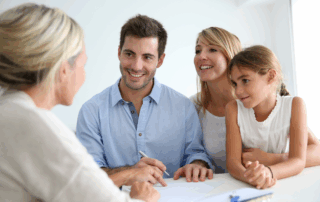WORK SITE SCAFFOLDING SAFETY
The majority of scaffold accidents on the construction site are caused by falls, slipping or being struck by an object from above. All of these accidents can be prevented by taking the proper precautions. Here’s how.
General Safety Tips
- To prevent slipping hazards, conduct a daily routine inspection to ensure all walking and working surfaces are free from potential hazards. If you spot a hazard, remove it.
- Never move, dismantle or alter a scaffold unless under the supervision of a qualified person while doing such activities.
- Never move a scaffold with workers still on it.
- Keep scaffold loads below maximum capacity and remove your equipment when the scaffold is not in use.
- Be alert for bad weather. High winds and driving rain and snow can be dangerous when working at high levels.
Protection for Those Below
- Always hoist up heavy tools, equipment and supplies, rather than carry them up by hand.
- There must be a 3½”-high toeboard to prevent things falling off a scaffold. If things on the scaffold are taller than 3½” (above the toeboard) other systems, like debris nets, must be used to catch falling tools or materials.
- Always wear a hard hat when working on and around a scaffold.
- Never walk under or near the scaffold if roped off when work is being performed above.
Fall Protection Basics
To help protect you against potentially deadly falls, fall protection is needed when working 6 feet or more above a lower level, and consists of either a personal fall arrest system or guardrail systems, depending on the job. If using a fall arrest system, keep the following in mind:
- Always attach your lanyard to a vertical lifeline, horizontal lifeline or scaffold structural member.
- If you are using a vertical lifeline, make sure that you are fastened to a fixed safe point of anchorage, independent of the scaffold. This includes structural members of buildings, but not standpipes, vents, electrical conduit, etc. They may give way under the force of a fall.
- Clean and test your gear regularly, and never tamper with your fall protection system.
When working on scaffolding, your safety is our top priority. Make it yours, too!
About the Author
Share This Story
Related Blogs
Personalization Now a Baseline Expectation in Employee Benefits
In 2025, personalization has moved from “nice to have” to “non-negotiable.” Employees expect benefits that reflect their individual needs, values, and life stages. Static, one-size-fits-all plans are being replaced by flexible, modular offerings that empower employees to choose what matters most.
Fertility, Family Planning, and Parental Leave Are Front and Center
In 2025, family-building support has emerged as a defining priority in employee benefits strategy. Fertility coverage, inclusive parental leave, and caregiving support are no longer niche offerings — they’re central to how employees evaluate workplace value. As life paths diversify and caregiving responsibilities expand, benefits managers are rethinking what it means to support the whole employee.
Gag Clause Attestation Deadline: December 31, 2025
Employer-sponsored group health plans must submit their 2025 Gag Clause Prohibition Compliance Attestation (GCPCA) to CMS by December 31, 2025, to confirm compliance with federal transparency rules. This annual filing covers the 2024 calendar year and applies regardless of employer size or funding arrangement.






